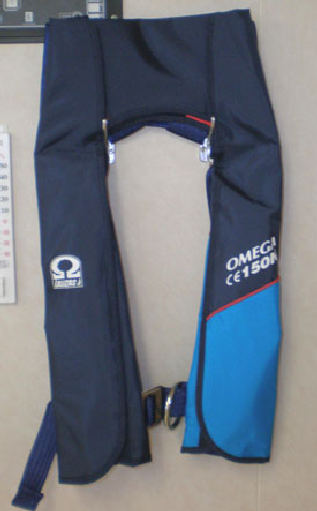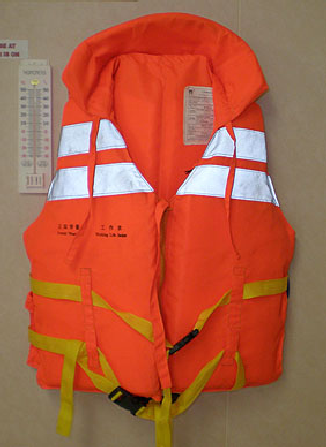
- •Государственный комитет рыбного хозяйства украины
- •Введение
- •Unit I marine power plant automation
- •Control systems
- •Engine control room
- •Vocabulary
- •Exercises
- •I. Translate the text.
- •II. Complete the following. Choose the right word from the list.
- •III. Select the suitable preposition from the list. Across, at, by, during, for, from, of, on, out, throughout, with
- •IV. Translate the following functional specification:
- •1St letter
- •2Nd letter etc.
- •V. Translate into English in written:
- •VII. Answer the following questions:
- •Автоматика
- •Unit II seafarers’ employment
- •Contract of employment
- •Vocabulary
- •Exercises
- •I. Translate the text.
- •II. Complete the following. Choose the right word from the list.
- •III. Select the suitable preposition from the list.
- •IV. Translate the words and words combination in the brackets.
- •V. Answer the following questions:
- •VI. Translate from Russian into English:
- •VII. Fill in the application form
- •Unit III fire fighting and safety in machinery spaces
- •1. What is fire?
- •1) Solid fires
- •2) Liquid fires
- •3) Electrical fires
- •4) Chemical fires
- •2. Machinery space fires
- •The Dangers of Machinery Spaces
- •The Causes of Machinery Space Fires
- •Fire Prevention in Machinery Spaces
- •Maintenance
- •Firefighting in Machinery Spaces
- •I solate it
- •Exercises
- •I. Translate the text.
- •II. Complete the following. Choose the right word from the list.
- •III. Select the suitable preposition from the list.
- •IV. Answer the following questions:
- •V. Translate from Russian into English:
- •Fire Safety Plans
- •Exercise Translate into English:
- •Vocabulary
- •Unit IV emergency procedures, musters and drills
- •1. Types of drills
- •1.1. Fire drills general
- •1.2. Man overboard drills
- •1. 3. Abandon ship drills
- •Muster list and emergency instructions
- •Vocabulary
- •Exercises
- •I. Translate the text.
- •II. Complete the following. Choose the right word from the list.
- •III. Select the suitable preposition from the list.
- •IV. Answer the following questions:
- •VI. Translate from Russian into English:
- •Unit V survival craft and rescue boats
- •Lifeboats
- •Life rafts
- •Liferaft
- •Rescue boats
- •Aboard the survival craft
- •Vocabulary
- •Exercises
- •I. Translate the text.
- •II. Complete the following. Choose the right word from the list.
- •III. Select the suitable preposition from the list.
- •IV. Answer the following questions:
- •V. Translate from Russian into English:
- •Unit VI personal life-saving appliances
- •Lifejackets
- •Immersion suits
- •Anti-exposure suits
- •Lifebuoys
- •Exercises
- •I. Translate the text.
- •II. Complete the following. Choose the right word from the list.
- •III. Select the suitable preposition from the list. After, at, by, during, for, in, on, to, with, within, without.
- •IV. Answer the following questions:
- •V. Translate from Russian into English:
- •VI. Translate the following word combinations.
- •Unit VII medical emergencies
- •Introduction
- •Immediate Reaction on Finding a Casualty
- •Summary of Emergency Response
- •First aid procedures
- •Exercises
- •I. Translate the text.
- •II. Complete the following. Choose the right word from the list.
- •III. Select the suitable preposition from the list. Aboard, at, beyond, for, from, in, on, to
- •IV. Answer the following questions:
- •V. Translate from Russian into English:
- •First aid procedures (Part II) Bleeding
- •Fractures
- •Frostbite
- •Hypothermia
- •Heart Attack
- •Exercises
- •I. Translate the text.
- •II. Complete the following. Choose the right word from the list.
- •III. Select the suitable preposition from the list. Before, below, by, in, to, with
- •IV. Answer the following questions:
- •V. Translate the following sentences from Russian into English:
- •Vocabulary
- •Regions of the Body – Части тела
- •Types of fractures
- •Unit VIII engine room documentation
- •Engine room log book
- •Night order book
- •Engine room bell book
- •Daily noon report
- •Instruction books, blueprints and diagrams
- •Exercises
- •I. Translate the text.
- •II. Complete the following. Choose the right word from the list.
- •III. Select the suitable preposition from the list.
- •IV. Translate from Russian into English:
- •Appendices appendix 1 graphical symbols for fire control plans
- •Appendix 2
- •Imo symbols and safety signs
- •Appendix 3 Mechanical Symbols and Colour Scheme
- •Список использованной литературы
- •References
- •Содержание
Unit VI personal life-saving appliances
Life-saving appliances on all ships have to be fitted with retro-reflective material(retro-reflective material is a material which reflects in the opposite direction a beam of light directed on it) where it will assist in detection and in accordance with the recommendations of the Organization(Organization means IMO with all its committees) in A.658(16);
Unless expressly provided otherwise in the opinion of the Administration(Administration means Maritime administration of Flag state), all LSA prescribed in this part shall:
be constructed with proper workmanship and materials;
not be damaged in stowage throughout the air temperature range -30°C to +65°C;
if they are likely to be immersed in seawater during their use, operate throughout the seawater temperature range -1°C to +30°C;
where applicable, be rot-proof, corrosion-resistant, and not be unduly affected by seawater, oil or fungal attack;
where exposed to sunlight, be resistant to deterioration;
be of a highly visible color on all parts where this will assist detection;
be fitted with retro-reflective material where it will assist in detection and in accordance with the recommendations of the Organization in A.658(16);
if they are to be used in a seaway, be capable of satisfactory operation in that environment;
be clearly marked with approval information including the Administration which approved it, and any operational restrictions;
where applicable, be provided with electrical short circuit protection to prevent damage or injury.
The Administration shall determine the period of acceptability of life-saving appliances which are subject to deterioration with age. Such life-saving appliances shall be marked with a means for determining their age or the date by which they must be replaced. Permanent marking with a date of expiry is the preferred method of establishing the period of acceptability. Batteries not marked with an expiration date may be used if they are replaced annually, or in the case of a secondary battery (accumulator), if the condition of the electrolyte can be readily checked.
Text A
Lifejackets
A life jacket is a personal flotation device that is certified by an independent authority as a life jacket that complies with the requirements of SOLAS.
A n
abandon ship life jacket must be placed in a rack or a designated
location near each bunk. All life jackets must comply with Safety of
Life at Sea (SOLAS) and other local regulating agencies.
n
abandon ship life jacket must be placed in a rack or a designated
location near each bunk. All life jackets must comply with Safety of
Life at Sea (SOLAS) and other local regulating agencies.
Abandon ship life jackets should be capable of being donned and adjusted within 30 seconds. They should have a conspicuous, centrally positioned lifting bracket (a strong webbed loop with which to pull the wearer from the water) and a whistle housed in loop or small pocket, reflective tape and a battery-powered light. They should turn an exhausted or unconscious person face upward (within five seconds with inherent buoyancy and ten seconds with auto or manual gas inflation) and hold the body inclined backward between 30° and 60° from the vertical with the mouth clear of the water.
T here
should be at least 100% more abandon ship life jackets on board
beyond the maximum number of crew and passengers. Additional life
jackets must be available for bridge crew and engine room personnel
and kept near the work areas.
here
should be at least 100% more abandon ship life jackets on board
beyond the maximum number of crew and passengers. Additional life
jackets must be available for bridge crew and engine room personnel
and kept near the work areas.
The three main types of life jackets are:
1) An inherently buoyant life jacket, well padded with closed-cell foam. An abandon ship life jacket will be of this construction.
2) Manual gas-inflatable life jackets with a pull tag to activate the carbon dioxide cylinder with oral inflation tube.
3 )
Automatic gas inflatable life jackets in which the carbon dioxide
cylinder is activated when immersed in water, with both oral
inflation and manual pull-tag overrid jackets can be worn flat and
folded against the body but neither becomes a life jacket until
fully inflated. If you fall into the water unconscious, a jacket
requiring manual inflation will be of little use. Under no
circumstances should an automatically inflatable or inherently
buoyant life jacket be worn while in a helicopter since, in the
event of ditching, it will inflate and trap the wearer inside the
emergency exits.
)
Automatic gas inflatable life jackets in which the carbon dioxide
cylinder is activated when immersed in water, with both oral
inflation and manual pull-tag overrid jackets can be worn flat and
folded against the body but neither becomes a life jacket until
fully inflated. If you fall into the water unconscious, a jacket
requiring manual inflation will be of little use. Under no
circumstances should an automatically inflatable or inherently
buoyant life jacket be worn while in a helicopter since, in the
event of ditching, it will inflate and trap the wearer inside the
emergency exits.
Manual and automatic gas inflation models need more servicing than a jacket with inherent buoyancy. The cylinders should be weighed at regular intervals to ensure the carbon dioxide is not leaking. According to manufacturers’ instructions, company procedures and local regulating agencies, a thorough inspection program should be devised.
Text B
